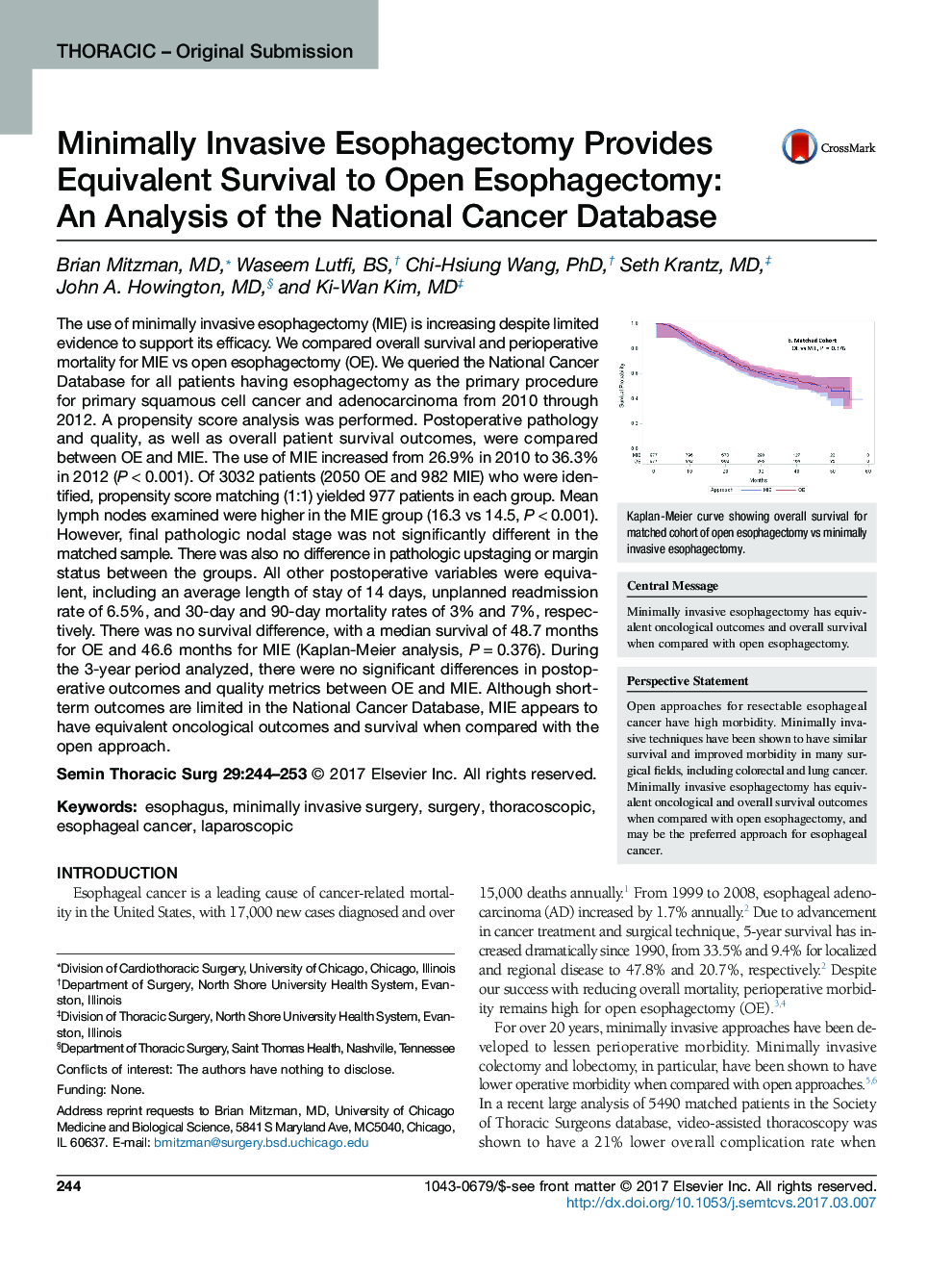| Article ID | Journal | Published Year | Pages | File Type |
|---|---|---|---|---|
| 5621443 | Seminars in Thoracic and Cardiovascular Surgery | 2017 | 10 Pages |
The use of minimally invasive esophagectomy (MIE) is increasing despite limited evidence to support its efficacy. We compared overall survival and perioperative mortality for MIE vs open esophagectomy (OE). We queried the National Cancer Database for all patients having esophagectomy as the primary procedure for primary squamous cell cancer and adenocarcinoma from 2010 through 2012. A propensity score analysis was performed. Postoperative pathology and quality, as well as overall patient survival outcomes, were compared between OE and MIE. The use of MIE increased from 26.9% in 2010 to 36.3% in 2012 (Pâ<â0.001). Of 3032 patients (2050 OE and 982 MIE) who were identified, propensity score matching (1:1) yielded 977 patients in each group. Mean lymph nodes examined were higher in the MIE group (16.3 vs 14.5, Pâ<â0.001). However, final pathologic nodal stage was not significantly different in the matched sample. There was also no difference in pathologic upstaging or margin status between the groups. All other postoperative variables were equivalent, including an average length of stay of 14 days, unplanned readmission rate of 6.5%, and 30-day and 90-day mortality rates of 3% and 7%, respectively. There was no survival difference, with a median survival of 48.7 months for OE and 46.6 months for MIE (Kaplan-Meier analysis, Pâ=â0.376). During the 3-year period analyzed, there were no significant differences in postoperative outcomes and quality metrics between OE and MIE. Although short-term outcomes are limited in the National Cancer Database, MIE appears to have equivalent oncological outcomes and survival when compared with the open approach.
